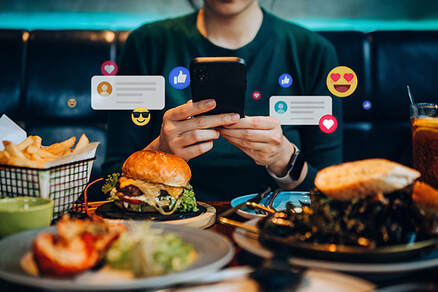 Guest Blog Insurance underwriters research your business before issuing a quote or renewing coverage. They find clues about your day-to-day operations in customer reviews, social media profiles, and even the image gallery on your website. Since this analysis can affect your insurance rates, you want to make sure your online presence conveys an accurate story. Here’s what underwriters look for and factors you need to think about: If you say you’re a restaurant, but you’re open until 1 a.m., are you really a bar? Suppose you describe your business as a family restaurant where people of all ages bond through great food and conversation. However, on Yelp, several reviews compliment your cocktails and live entertainment. And your Instagram feed features young adults dancing, a flashing disco ball, and a crowded bar. At the very least, you can expect the underwriter to ask questions to classify your business correctly. Maybe you are a family restaurant until 8 p.m. But after that, you cater to a different target audience that wants to drink and party. The latter scenario is more expensive to insure. What kinds of risks are you taking? An insurance company can deny or cancel coverage if they don’t like what they see online. One establishment featured its ice shot glasses on social media. Fun-loving patrons downed the liquor then smashed their ice “glasses” on the floor, creating a slip hazard. At another place, a bartender stood on top of the bar to toast a patron’s birthday. The restaurant added this celebratory picture to their website. Standing on the counter was not a normal activity in this workplace, but the insurance company didn’t know that. They assumed it was part of the business’s culture, and the worker’s comp carrier spoke up. They didn’t want the risk exposure. Do you comply with laws and regulations? Recently, a bar advertised its “happy hour” on social media with a photo showing “$1 beer all day.” Oregon law prohibits promoting happy hours on social media. Additionally, the beer price and event duration posed underwriting concerns since both factors can contribute to over-consumption of alcohol. In this case, the insurer canceled the bar’s entire insurance package. 7 tips for avoiding an adverse underwriting decision In five minutes, an underwriter is sizing up your business by looking at your online presence. They are asking themselves, “Do I even offer insurance to you? If I let you in the door, will I need to charge you more because I perceive you as riskier?” To position your business in the best possible light with underwriters:
The insurance coverage you need depends on the classification of your business. Are you a bagel bakery or a brew pub? What percentage of your revenue comes from alcohol sales — 0%, 20%, 50%, 80%? If there’s a mismatch between the info on your insurance application and online presence, you risk an adverse underwriting decision. Insurers may decline to quote. Or if you already have coverage, you risk claim denials and the potential for policy cancellation. Take the opportunity to shape your story. Submit a letter or video with background information you want the underwriter to consider. Highlight the steps you’ve taken this year to improve your risk profile. Provide context to help insurers understand your online reputation and business vision. | Rob Hoover Rob Hoover of Risk Strategies Fournier Group manages ORLA’s Hospitality Insurance Program (HIP). Contact him to learn more about online reputation and insurance pricing. This guest blog was submitted by Risk Strategies Fournier Group. For more information on guest blog opportunities, contact Marla McColly, Business Development Director, Oregon Restaurant & Lodging Association.
Comments are closed.
|
Categories
All
Archives
June 2024
|
Membership |
Resources |
Affiliate Partners |
Copyright 2024 Oregon Restaurant & Lodging Association. All Rights Reserved.
8565 SW Salish Lane Suite 120 | Wilsonville, OR 97070-9633 | 503.682.4422 | 800.462.0619 | Contact Us
Site Map | Accessibility | Privacy Policy
8565 SW Salish Lane Suite 120 | Wilsonville, OR 97070-9633 | 503.682.4422 | 800.462.0619 | Contact Us
Site Map | Accessibility | Privacy Policy

 RSS Feed
RSS Feed


